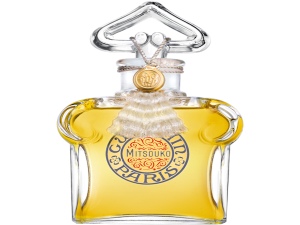Most animals depend upon their pheromones – their airborne hormones – to orientate themselves within their environment and to communicate with other members of their own species.
Pheromones are expressed by skin glands, in urine and faeces, and in vaginal secretions and exhaled breath. In addition to the main olfactory system, animals have specialised tissue within the nose to identify pheromones, the vomeronasal organ (VNO). Although some humans have been shown to have vestigial remnants of VNO tissue, these do not communicate with the brain.
At some point in human evolution our pheromone system has been edited out. We do not have pheromones. Period.
Of course, we retain a reasonable sense of smell along with our other rather mediocre senses, but nothing as phenomenal as a dog’s (the built-for-purpose bloodhound has a sense of smell “up to a hundred million times” more acute than a human), but we are still able to commit to memory 10,000 scents, each one of which can contain 30 unique ligands, odorant molecules, individual odours – not too bad.
In day to day living, we have the ability to delete inconsequential smells – especially smells that have no relevance to our immediate safety and security. If you were to be beamed up into a hot medieval street, you would immediately vomit – the sudden shock of stench from open sewers, rotting debris and human body odour would be overwhelming. The inhabitants would have thought nothing of it.
Source – Men’s Health
Today we go to endless trouble to eliminate and mask smells. We spend world-wide billions on deodorants, depilation and perfumes to obliterate our personal olfactory signature, not to speak of further billions on cleansing materials and products.
What we wash and scrub and scour away leaves little to protect our biggest organ which weighs in at around 8 pounds and measures 22 square feet. Skin is our miraculous best friend. Its natural protectants are the secretions from the sweat glands and sebaceous glands. They are initially almost odourless (depending on what you might have eaten prior), but soon the skin bacteria break down the organic content to create our archetypal body odour.
Skin secretions lubricate, waterproof and help regulate body temperature. But an individual’s inherent smell was, and indeed could still be, a vital means of communication.
The ultimately powerful generators of body odour are the luxuriously haired, gland-rich axillary and anogenital areas. It is these secretive intertriginous dark and damp skin crevices which trap our unique scent – our spoor – and disseminate it through the much magnified surface areas provided by their prolific hair shafts.
In times past, body odour enabled us to recognise friends and family, fecund and infertile, enemies and encroachers, health and ill-health. Today we are just about able to distinguish between male and female by smell alone. We can probably smell fear and anxiety. Women might smell better to men around the time of ovulation (if they are not taking the contraceptive pill).
What women do know is how to attract men by using their infinitely more intuitive noses.
Source – Guerlain
Have you ever thought why so many extortionately expensive little bottles remain unopened and discreetly out of sight? These unsolicited (and no doubt desperate) gifts of scents famous and fabulous have not impressed. Women are innately aware of their own body odour, and, given the opportunity, they will have worked out which highly designed perfume creates that magical synergy of complementary ligands that delivers the desired knock-out effect.
What we eat profoundly effects how we smell to others. If you are losing weight on a low carb diet, it is quite likely that you are trailing an aura of acetone – nail varnish remover – due to “ketosis”, a result of the breakdown of fat. Eat a lot of meat and you will allegedly smell less attractive. Constipation can create a “bad breath” effect through the leakage of volatile organic compounds from the gut into the bloodstream. Obviously any sulphurous chemicals in foodstuffs are similarly expressed from the lungs, the skin and occasionally the urine – as in garlic, onions, “curry”, asparagus, broccoli and cabbage, to name but a few.
Source – University Hospitals
Apart from avoidance of the guilty grub, there is little you can do other than wait for the volatile chemicals to disperse, but antiperspirants will help to reduce transpiration, and copious fluid intake will wash out blood-borne odorants through the kidneys.
Biophysicists and physiologists are in fierce debate over the mechanism of olfaction. At present there is a tacit agreement that an odorant molecule, the ligand, is recognised by the nasal receptors through a combination of shape and vibration. Just how the brain sorts out the bombardment of signals from the olfactory organ is as yet unknown.
The work will be done – funded by the vast wealth of the perfume industry. As EU regulation increasingly restricts the use of both natural and synthetic odorants (as potential allergens), massive efforts are being made to synthesise novel molecules, simulacra with similar signature shapes and vibrations giving similar smells.
Soruce – ZME Science
This cat-and-mouse battle could well be lost to the small-minded bureaucrats of Brussels and their quibbling committees. Certainly the canny industrialists are moving significant investment into the astonishingly more lucrative and less constrained markets of the Middle East and Asia – where perfume was first conceived several millennia ago.
Just how did the newborn you find your mother’s breast? By smell, of course.








